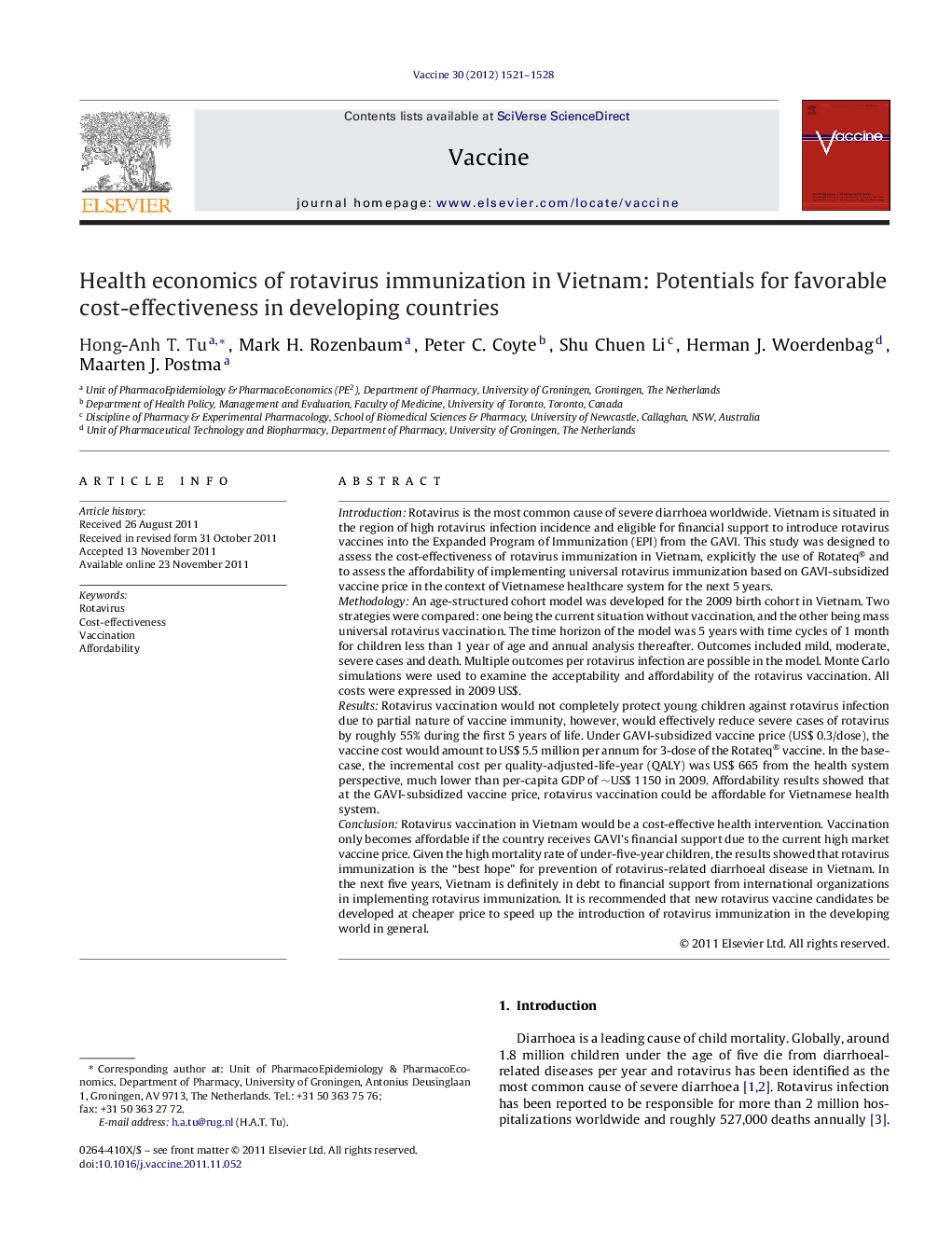| Article ID | Journal | Published Year | Pages | File Type |
|---|---|---|---|---|
| 2403140 | Vaccine | 2012 | 8 Pages |
IntroductionRotavirus is the most common cause of severe diarrhoea worldwide. Vietnam is situated in the region of high rotavirus infection incidence and eligible for financial support to introduce rotavirus vaccines into the Expanded Program of Immunization (EPI) from the GAVI. This study was designed to assess the cost-effectiveness of rotavirus immunization in Vietnam, explicitly the use of Rotateq® and to assess the affordability of implementing universal rotavirus immunization based on GAVI-subsidized vaccine price in the context of Vietnamese healthcare system for the next 5 years.MethodologyAn age-structured cohort model was developed for the 2009 birth cohort in Vietnam. Two strategies were compared: one being the current situation without vaccination, and the other being mass universal rotavirus vaccination. The time horizon of the model was 5 years with time cycles of 1 month for children less than 1 year of age and annual analysis thereafter. Outcomes included mild, moderate, severe cases and death. Multiple outcomes per rotavirus infection are possible in the model. Monte Carlo simulations were used to examine the acceptability and affordability of the rotavirus vaccination. All costs were expressed in 2009 US$.ResultsRotavirus vaccination would not completely protect young children against rotavirus infection due to partial nature of vaccine immunity, however, would effectively reduce severe cases of rotavirus by roughly 55% during the first 5 years of life. Under GAVI-subsidized vaccine price (US$ 0.3/dose), the vaccine cost would amount to US$ 5.5 million per annum for 3-dose of the Rotateq® vaccine. In the base-case, the incremental cost per quality-adjusted-life-year (QALY) was US$ 665 from the health system perspective, much lower than per-capita GDP of ∼US$ 1150 in 2009. Affordability results showed that at the GAVI-subsidized vaccine price, rotavirus vaccination could be affordable for Vietnamese health system.ConclusionRotavirus vaccination in Vietnam would be a cost-effective health intervention. Vaccination only becomes affordable if the country receives GAVI's financial support due to the current high market vaccine price. Given the high mortality rate of under-five-year children, the results showed that rotavirus immunization is the “best hope” for prevention of rotavirus-related diarrhoeal disease in Vietnam. In the next five years, Vietnam is definitely in debt to financial support from international organizations in implementing rotavirus immunization. It is recommended that new rotavirus vaccine candidates be developed at cheaper price to speed up the introduction of rotavirus immunization in the developing world in general.
► Rotavirus vaccination using RotaTeq® is cost-effective in Vietnam. ► GAVI's support for rotavirus vaccination in developing countries is crucial. ► Mass universal rotavirus vaccination and no vaccination were compared.
